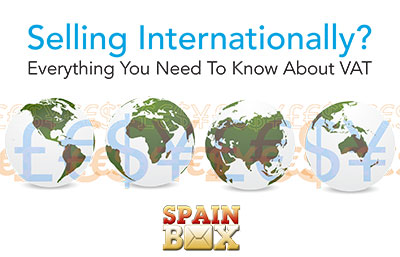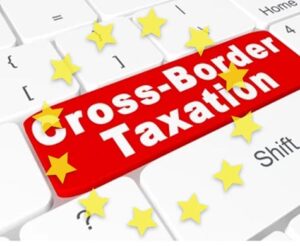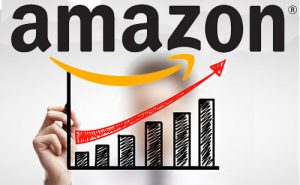Selling Internationally? Everything You Need TO LEARN About taxes at Europe
With the growth of the global e-commerce scenery and a shift in shopping habits, an increasing number of retailers of most sizes are discovering that expanding internationally is an exciting and natural probability. International expansion poses many opportunities, including a vast number of new customers, the chance to overcome seasonality and a potential niche in an undeserved market.
Despite this evolution, online retailers can be daunted by the perceived difficulties of expanding overseas, including getting to grips with different taxation plans, which vary widely by region. However, it’s very important to suppliers to embrace the potential customers awaiting their businesses overseas and not shy apart from the opportunity.
If intercontinental expansion is on your own radar, or you’re currently advertising across borders, you need to be certain you are alert to the tax requirements you should follow. We’ve collaborated with Accordance VAT, an international VAT consultancy and VAT compliance business, to compile this functional guide for retailers that are selling things across borders.
Marketplaces & Fulfillment Centers
When advertising internationally, many suppliers leverage the managed inventory service offered by eBay and Amazon. Programmes such as Fulfillment by Amazon or eBay’s Global Shipping Program can be very ideal for businesses with little if any logistics working experience in the EU, and in addition help with tasks such as returns or customer support.
For retailers, you should understand how the application of these platforms and inventory services make a difference the VAT reporting requirements of their business. Make sure that you be capable of obtain the info you will need from your supplier so that it can be accurately reported to the tax authorities. This data should be reportable by nation and by the sort of customer. A standard error is for businesses to just declare VAT on the amount of money remitted from the program provider after it has had its commission, instead of declaring VAT on the entire selling price to the customer. Keep in mind that any revenue received on delivery costs likewise counts as taxable revenue for a small business; so be sure you possess these figures accessible to you.
Managed inventory services may involve the provider having control above where the stock is situated. Often, a seller’s stock can be shifted closer to market where sales have been successful, which can involve moving goods in one EU country to another. For VAT purposes that is substantial, as these movements should be reported correctly in addition. It is vital for your company to fully understand the purchase chain so that you can successfully get compliant with VAT specifications.
Standard and Reduced Rates
Most goods inside of the EU are at the mercy of the standard rate of VAT inside of the applicable country. Nevertheless, the EU allows some items to be purchased at a reduced or perhaps a zero-rate of VAT. These items are often non-luxury or essential products, but the rules and prices vary by region. In the Spain, for example, children’s clothing and literature may be at the mercy of a zero-fee of VAT. However, if a business sold exactly the same items in Bulgaria, the fee applicable will be 20% on both items. It is important that companies are fully alert to the VAT rate applicable to their goods as in the EU the product sales price is usually shown as a gross, tax-inclusive figure.
If you don’t consider the VAT differences between nations around the world, it can have a dramatic impact on your margins. Offered the above exemplary case of selling a book in the Spain or in Bulgaria, a small business must increase its selling price by 20% to guarantee the similar margin is obtained in Bulgaria. Similarly, a business may also reap the benefits of selling goods in other countries where the VAT prices will be lower, and the margin made can be higher.
Therefore you should consider the pricing implications that arise due to VAT. Some businesses opt to employ a differential pricing type to take into consideration the differing VAT rates across the EU, while others decide to use a composite VAT amount where they make a loss in a few countries and gains in others, consequently balancing out the gains made. Getting advice in what is best for the business can make sure that you succeed in new market segments, and remain cut-throat while keeping your profit margin.
Selling Distance
Distance Selling occurs when goods located in one EU nation are sold and delivered to an exclusive individual or non-business customer in another EU nation. When sales begin, VAT is applicable in the nation where the goods are located or shipped from.
However, EU locations have Distance Selling thresholds which when exceeded, require owner to register and account for VAT for the reason that other EU region. The Distance Advertising thresholds vary by region but range between EUR 35,000 to EUR 100,000 and can be in local currency. In case an organization breaches these local nation thresholds in a calendar year, it will have an obligation to register for VAT as a nonresident trader in that country. It will then be required to charge local VAT on the products is sells and submit ongoing VAT Returns and potentially additional filings. VAT invoices may also be required based on the country in question.
It is important if you distance offer to actively monitor your revenue to EU countries, due to there may be financial penalties where VAT registrations are late and VAT is not correctly accounted for. It is also worth noting that range selling only applies to product sales to EU countries rather than any countries located outside the EU.
Making VAT Repayments and Receiving VAT Reimbursements
After a VAT returning has been filed, typically VAT is either payable to the pertinent tax authority, or, if considerably more VAT has been incurred by your business than collected, you will end up due a VAT refund.
Diverse tax authorities refund VAT in different methods. With some it might be held as credit to offset against any potential VAT payments. With others (including the Netherlands) it should be paid to a bank account. In Spain a cheque is delivered in Euros directly to your company.
VAT Registration – Information Required
Registering a non-EU-established organization in the EU to get VAT purposes should be done inside the name of a current director of the company.
The reason being tax authorities throughout Europe monitor current directors of VAT registered businesses with a view to prevent fraud.
To register your company you will be asked for several pieces of data concerning this director, for instance their house address and their taxes ID information for instance a National Insurance quantity/social security range, and additional information about other business ventures.
Importing Goods and Restoration of Import VAT
When items are imported into the EU, either as share or as personal deliveries, import VAT must generally be paid out at the customs border.
The person responsible for paying the VAT may depend on delivery terms nonetheless it may be the seller, the customer or the shipping company. VAT, incorporating Import VAT, may be recovered by organizations as long as they have proper documentation that may confirm that the VAT seemed to be paid in connection with its business pursuits. In the UK, for instance, VAT registered companies are issued having an import
SDA, Single Administrative Document (DUA in spanish) which entitles it to recover or offset the VAT it again has paid against the VAT that it all collects on future sales.
When non-EU businesses are considering importing goods in to the EU, it is advised to get a VAT registration in place to avoid problems with recovering Import VAT in the future. An additional tax identification number can be used for importing and exporting merchandise in the EU and this is named an Economic Operator Registration and Identification (EORI). In the UK, this can be requested as well as a VAT registration. It must be ensured that the import documentation provides the correct EORI variety as normally the VAT recovery process can be slowed significantly, or the claim could even be rejected by the tax authority. Please make sure that your shipping real estate agent is made aware of the correct VAT and EORI number when they come open to ensure timely healing of import VAT.
Filing – Data
When compiling and filing periodical VAT returns, it is essential to have a line-by-line breakdown of sales and purchases, usually in an Excel format. You will have to make sure that your sales are being made at the correct rate of VAT, converted into the neighborhood European currency using the official technique and described in the right filing period.
Additionally, tax authorities throughout the EU will periodically open an audit into a particular VAT declaration (they are triggered both randomly and for good sized VAT rebates). In this eventuality the taxes authority would usually ask to see sales ledgers along with invoice samples along with other supporting documentation.
Summing It Up
Expanding internationally opens up new opportunities and consumer bases for sellers. Don’t be daunted by the VAT demands you will come across – by making yourself alert to the individual demands of each country, it is possible to expand cozy in the knowledge that you will be compliant.
Take into account that every retailer’s tax situation depends on its individual investing activities – there’s no solution that’s relevant to everyone. That is why this content aims to get informative without having to be prescriptive. For a full assessment of one’s VAT situation, get in touch with Accordance VAT.







